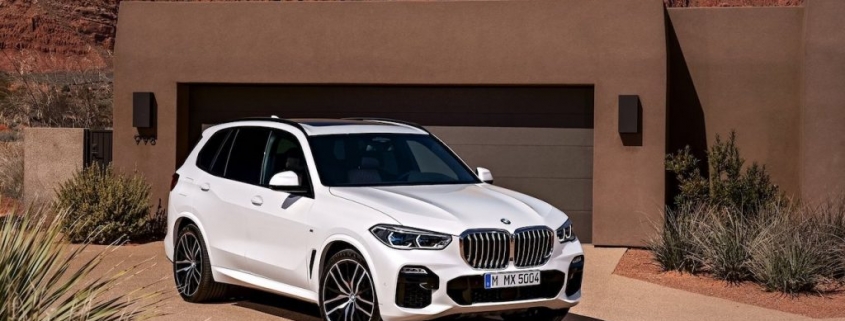6 Used BMW Models Consumer Reports Gave the ‘Never Buy’ Label
When looking at buying a used vehicle from any brand, it can be difficult to sort through which models will be the most reliable. This is because reliability ratings can vary drastically from year to year. To help, Consumer Reports compiled a list of the used BMW models you should avoid by giving them the “Never Buy” label.
Consumer Reports’ list surveyed actual owners of these vehicles to compile an accurate list of what kind of ownership experience you can expect to have. We’ll supplement this data with maintenance costs by Repair Pal to give you a sense of how much these vehicles will cost you on an annual basis.
1. BMW X5: 2012-2014, 2019
Starting this list of used BMW models, Consumer Reports says you should avoid the X5. More specifically, the 2012-2014 and 2019 models. This means we’re talking about at least two separate generations of the X5. Unfortunately, Consumer Reports doesn’t list a specific trim level or engine configuration as the most unreliable.
Regardless of which of these two BMW X5 generations you’re looking at, you have a choice of two turbocharged six and eight-cylinder engines.
According to Repair Pal, you’ll pay around $1,185 annually in maintenance to keep one of these SUVs running.
2. BMW X3: 2013,2015,2020

Next up in this Consumer Reports list of BMW models you should watch out for is the X3. Just like with the X5, Consumer Reports’ list covers various model years, these being 2013, 2015, and 2020.
Since it shares its platform with the 5 Series sedan, the BMW X3 also shares a few of the same engine options on offer. These include a turbocharged inline-four-cylinder and a turbocharged inline-six-cylinder.
According to Repair Pal, you’ll spend around $1,034 annually to maintain this SUV. While this figure is slightly smaller than the X5, it’s still one of the most expensive in its segment.
3. BMW X1: 2014

If you thought you could escape a costly ownership experience by opting for the smallest SUV BMW built in 2014, Consumer Reports disagrees. That’s because the 2014 X1 managed to receive the dreaded “Never Buy” label.
Like the X3, the X1 is also based on a sedan platform, except this time it’s the smaller 3 Series. One of the better aspects of the X1 is that it offers rear-wheel drive despite its small crossover form factor.
Amongst the other BMW SUVs covered in this list, the X1 has the lowest annual maintenance costs at $915, says Repair Pal.
4. BMW 5 Series: 2011-2013, 2018

While the 5 Series might be a sleek sedan, it seems Consumer Reports deemed it one of the BMW models you shouldn’t buy. More specifically, we’re looking at the 2011-2013 and 2018 model years. If you’re noticing a bit of overlap with the aforementioned X3, it’s likely because they share many powertrain components.
Unlike the SUVs mentioned above, the 5 Series exists with multiple engine and body style configurations. As a result, it’s even harder to pinpoint which version would be the most reliable.
Regardless, Repair Pal estimates you should expect to pay around $977 annually to maintain one.
5. BMW 4 Series: 2017

Next up in this Consumer Reports list of used BMW models you should avoid is a relatively new contender with the 4 Series. Introduced officially for the 2014 model year, the 4 Series exists largely as the two-door version of the 3 Series sedan. Although if you opt for the Gran Coupe, you can have a four-door version of a two-door version of a four-door car.
Oddly enough, Consumer Reports warns against the 2017 model alone. This is interesting as the 4 Series appears to be one of the most reliable models on the list.
Unfortunately, Repair Pal doesn’t have any specific information on the 2017 model. However, a comparable 2015 model costs around $1,229 to maintain annually.
6. BMW 3 Series: 2011-2013

RELATED: Best 2021 Midsize Luxury Cars According to Consumer Reports
Lastly, in this list of used BMW models Consumer Reports says you should avoid is the 3 Series. More specifically, we’re talking about the 2011-2013 models. These years correspond to the introduction of the sixth generation of the 3 Series dubbed the F30.
If you’re wondering why these early models specifically are the most reliable, it’s because the 3 Series eventually received a revised ranged of engines by the 2016 model year.
According to Repair Pal, you should expect to pay around $1,030 annually to keep one of these cars running.
Regardless of which BMW model you decide to go with, at least you know which ones you’re likely best off avoiding.
The post 6 Used BMW Models Consumer Reports Gave the ‘Never Buy’ Label appeared first on MotorBiscuit.







